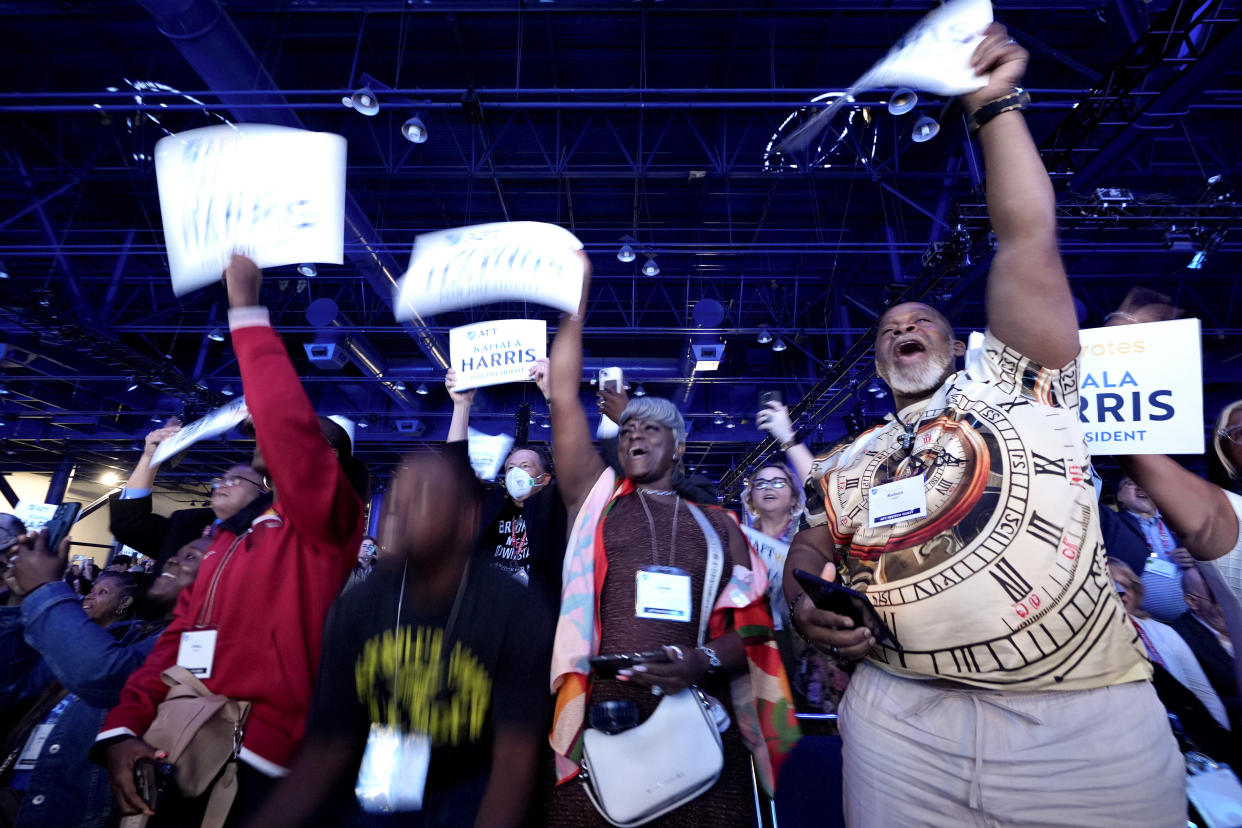The Election Has Been Totally Upended: Here’s What the Polls Show
As the dust settles on a chaotic few weeks in the landscape of the 2024 presidential election, a series of newly released polls indicate that the race has transformed into an exceptionally competitive contest. The developement began with Vice President Kamala Harris’ ascension to the forefront of the Democratic ticket, a move that has demonstrably curbed the momentum former President Donald Trump might have garnered following the recent Republican convention and the shocking assassination attempt that preceded it. While early indications suggested that Trump was extending his lead over President Joe Biden after their heated debate last month, current survey results reveal a dramatic shift in voter sentiment, particularly following Biden’s decision to withdraw from the race just last Sunday.
A Shifting Landscape in Polling Data
The newfound polling data clearly illustrates a significant reconfiguration of the electoral landscape since Biden's exit. What had once seemed a settled contest has abruptly transformed. Trump still holds a slender lead over Harris, but the difference in their standings is now razor-thin— a stark contrast from the former comfort level enjoyed by Trump against Biden after the debate. Recent figures from reputable sources such as The New York Times/Siena College depict Trump narrowly ahead by 1 point, The Wall Street Journal gives a 2-point advantage to Trump, and CNN shows a 3-point lead, all illustrating a tightening race that witnesses Trump’s earlier 6-point advantage dissipate nearly overnight.
The Impact of the Assassin's Attempt and GOP Convention
At first glance, the tightening of the polls might prompt curiosity about whether the assassination attempt on Trump had any substantive effect on voter opinions. Observers are eager to understand if there was a negative shift in perceptions of Trump as a result of this distressing incident, or if the former president is experiencing a bounce from the GOP convention and the announcement of his running mate, Senator JD Vance of Ohio. However, deeper analysis reveals that while Trump’s percentage might still hold a slight edge, he is now confronted with a formidable opponent in Kamala Harris, who has consequently demonstrated her ability to connect with crucial voter demographics previously alienated under Biden's candidacy.
Five Key Takeaways from the Latest Polls
-
Harris is Reinventing the Democratic Coalition: The initial shock of Biden's withdrawal and Harris assuming the mantle has seemingly rejuvenated the Democratic coalition. During Biden's campaign, there was a noticeable dilapidation of support among vital demographic sectors such as young people, Black voters, and Latino voters. However, Kamala Harris has begun to retrieve favor with these groups. According to the latest New York Times/Siena poll, her numbers indicate a stronger performance among these traditionally Democratic demographics compared to Biden’s scores throughout 2023. While Biden was experiencing notable drops among these crucial voter bases, Harris is showing signs of closing the gap.
-
Electoral Pathways Expand for Harris: Analyzing the changing voter dynamics reveals that Harris possesses multiple routes to collect the requisite 270 electoral votes, which Biden had struggled to secure. Whereas Biden’s campaign seemed to hinge largely on the confines of the Rust Belt, Harris' comparative strength among Black and Latino voters opens doors in traditionally challenging Sun Belt states like Arizona, Georgia, Nevada, and North Carolina—regions where Biden was lagging significantly. Although comprehensive polling in these regions remains sparse, shifting national trends hint that Harris might be reinstating attention in critical swing territories.
-
Trump’s Favorability on the Rise: Even in the face of Harris' emergence, Trump appears to be enjoying a boost in popularity, achieving favorability ratings that are nearing his highest benchmarks recorded in recent memory. Polling data reveal that Trump has regained some ground with voters, despite the consistent trend of more Americans expressing unfavorable views towards him than favorable ones. The Wall Street Journal attributes a 47 percent favorable rating to Trump, marginally closing the gap to parity compared to his past standing, which had consistently trended negatively prior to now.
-
Bipartisan Approval of Biden’s Withdrawal: In an unusual turn of events, President Biden’s retreat from the race has received an overwhelmingly positive reaction from likely voters. An astounding three-in-four respondents in the New York Times/Siena poll expressed they felt either enthusiastic or satisfied with his decision to withdraw. The approval rate transcends party lines, garnering bipartisan support: a remarkable 86 percent of Democrats endorsed this move, further clarifying the dissatisfaction with the current trajectory of Biden's campaign.
-
Kennedy's Backslide amidst Shifting Terrain: Independent candidate Robert F. Kennedy Jr. finds himself in precarious waters; having enjoyed a marginal rise in favor during the summer, Kennedy's numbers have witnessed a nosedive alongside the dramatic changes in the race. His support has dwindled to 5 percent according to the New York Times/Siena poll, a stark decrease from earlier weeks. As Trump's favorable ratings increase and Harris garners greater public acceptance, the previously viable coalition of voters who disapproved of Biden and Trump—the so-called "double haters"—is evaporating fast.
Conclusion: A Fractured Yet Exciting Race Ahead
With heightened activity and unexpected outcomes dramatically reshaping the electoral playing field, the 2024 presidential election is clearly in a state of flux. The current trajectory could suggest turbulence and uncertainty, especially as voters grapple with rapidly changing dynamics. The contest between Harris and Trump is poised to become a close race rather than a foregone conclusion, inviting tremendous speculation about where voter loyalty might land as the campaign continues to unfold. As we stand at the onset of this critical face-off, the refinement of strategies, responsive messaging, and promises of engagement with the electorate will be decisively pivotal. The potential for dramatic shifts remains a compelling spectacle as we advance toward the election, and all eyes are on how the candidates will navigate this newly competitive landscape.
